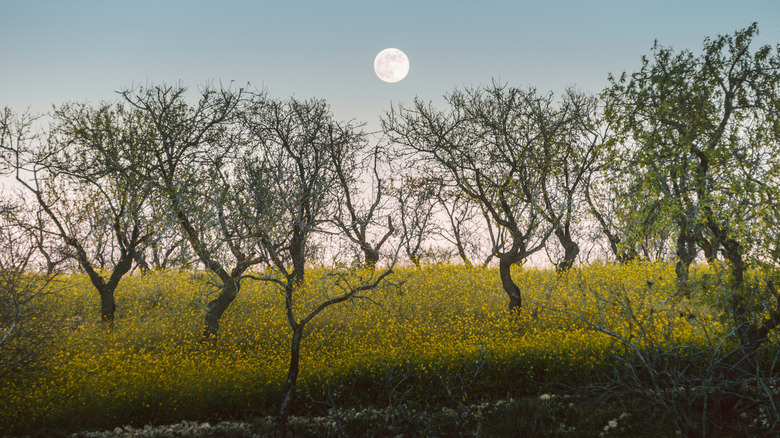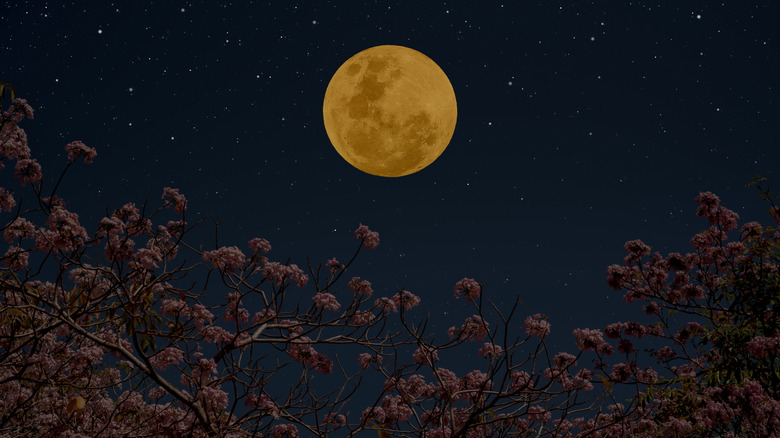Why Gardeners Use This Ancient Technique To Grow The Healthiest Crops
People have long been fascinated with the phases of the moon, and we all know the moon's gravitational pull affects the comings and goings of the tide. But some people believe a full moon changes how plants germinate. Indigenous peoples in the America, Oceania, Europe, and South America took part in lunar gardening as part of ancient historic practices.
Of course, don't confuse lunar gardening with the moon garden trend, filled with flowers that typically bloom in the dark. Lunar gardening is more about planning how and when you plant and rotate crops based on the different phases of the moon. Throughout history, some people have believed that the moon's gravity can manipulate where water sits in the soil and how roots grow as well. The basic idea is that the waxing of the moon, when the moon appears to grow bigger (from new moon to full moon) is when the Earth and moon are moving closer together.
As the moon comes closer, according to folklore, any seeds sprout better. Moisture in the soil — like tides in the ocean — supposedly move closer to the moon, or in this case, the surface of the soil, where waiting seeds drink it up. Others believe that the moon's gravity also affects how a plant's roots grow. There's little research proving that the moon affects plants, but it can still be fun to try your hand at lunar gardening practices, just like our ancestors might have done. The main thing to note is that annual flowers and above-ground harvestable crops should be planted as the moon waxes, while flowering bulbs, underground tuber crops, and perennial flowers should be planted as the moon wanes.
How to think about moon phases and gardening
Scientists haven't found much correlation between the moon's phases and plant growth – but some studies found that there were measurable effects on the pollination process. According to a 2015 study from Royal Society, certain plants can produce more pollen during certain brighter phases of the moon. This could be because these plants are trying to attract pollinators on nights that they are more likely to see the pollen, but the correlation isn't proven.
If you're keen to try planting by the moon cycle, you can see if these ancient traditions will work for you and your garden. First figure out which phase the moon might be in. You can look up at the sky at night and try to figure this out, or you can head to the Farmer's Almanac Lunar Calendar and type in your zip code for the quickest results.
You could plant tulips, carrots, and pollinator-friendly perennial flowers like bee balm, one of the best garden perennials you should be planting in September. Just grab your seeds and trowel when the moon is in a waning phase — these include the days after a full moon, but before a new moon appears. If you want to plant annuals like calendula, cilantro, tomatoes, or marigolds, do so in the waxing phases of the moon. Also, even though this is lunar gardening, you don't have to actually plant any seeds at night ... unless you want to. Planting them during the day is fine.

